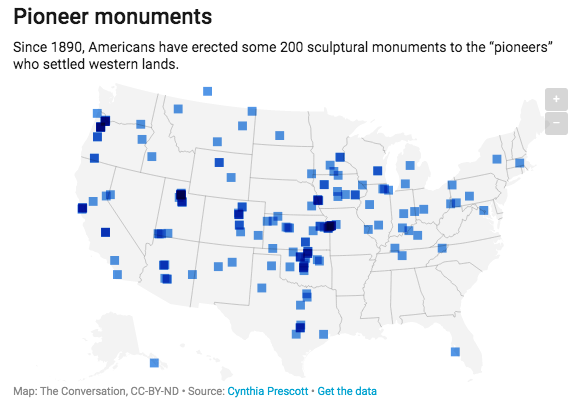When Germany’s capital is mentioned, people often think of Berlin’s turbulent history, thriving arts scene and hipster culture. However, multiculturalism ought to also come to mind. With 21% of its population hailing from non-German backgrounds representing 190 countries, Berlin is becoming a true melting pot. Often nicknamed “Multikulti,” Berlin portrays itself as a tolerant city aiming to attract talent from abroad while celebrating its diversity within.
Guest-workers from Hungary in East Germany. Lehmann. 30 Sept. 1988. CC3.0
A History of Migration
After World War II, the Allied Powers divided Berlin into four regions. The American, British and French regions made up West Berlin and the region occupied by the Soviet Union made up East Berlin. Immigration to Berlin was largely influenced by the dynamics of the divided city’s various zones. After the war, there was a strong need for labor to help rebuild Germany. West Germany recruited “guest-workers” to fill this need from nearby areas such as Turkey and southeastern Europe. The East German government recruited guest-workers from other socialist countries, such as North Vietnam and North Korea. More recently, many immigrants escaping conflicts in the Middle East and North Africa have sought refuge in Berlin.
An Arabic market in Neukolln Gürer CC2.0
Multicultural Districts in Berlin
Although Berlin has a sizable international population, being an immigrant in the city is not without its problems. Areas of Berlin with high immigrant populations tend to be weaker economically and are known for social problems including high unemployment, increased crime rates, drug trafficking and gentrification. Ethnic minorities are usually present only in certain neighborhoods and are underrepresented in German popular culture and politics. Immigrants are also subjected to acts of hatred and violence due to strongholds of White nationalism in areas of East Berlin. Additionally, previous immigration policies in Berlin have focused on tolerating, rather than accepting, immigrants in the city. The term “Auslander” or foreigner negatively refers to immigrants in Germany, speaking to the difficulties they face with integrating into German society.
However, things are slowly changing. Immigrant communities in Berlin are proudly showcasing their cultures for others to see. Travelers who visit Berlin’s multicultural hubs can help change the narrative of immigration in Germany.
Sehitlik Mosque in Berlin’s Neukolln district. Zairon CC International 4.0
Neukolln
Today, the majority of Berlin’s immigrant population resides in the center of the city in the districts of Neukolln and Kreuzberg. Although previously known for its unemployment and drug problems, Neukolln is reinventing itself as a hip and multicultural center. One of Neukolln’s iconic areas is Sonnenallee, often nicknamed “Arab Street,” which is home to many Middle Eastern restaurants, grocery stores and baklava shops. Walking through Sonnenallee, one is nearly as likely to hear various Arabic dialects and Turkish as German. Neukolln is also home to the Sehitlik Mosque, which is the most visited mosque in Berlin. The mosque participates in the Long Night of Religions, an annual event where houses of worship all over the city open their doors to the public to promote tolerance and interreligious dialogue.
Turkish market in Kreuzberg. Gürer. CC2.0
Kreuzberg
Berlin’s Kreuzberg district is often nicknamed “Little Istanbul” for good reason; the neighborhood is home to the largest Turkish population outside of Turkey. On Tuesdays and Fridays, Kreuzberg hosts an expansive Turkish Market, selling everything from fresh produce and spices to fabrics and street food. Kreuzberg is an excellent place to try Turkish staples such as doner kebab and gozleme. Markthalle Neun is another acclaimed international market in Berlin. On Thursday evenings, it hosts “Street Food Thursday” with seemingly endless vendors serving diverse culinary options. Berlin’s Jewish Museum, also located in Kreuzberg, is the largest museum in Europe focusing on Jewish history and culture. Known for its nightlife and hip culture, Kreuzburg is rising in popularity. At the same time, this has given rise to gentrification which makes it difficult for migrant families to afford life there.
One of the many warehouses in the Dong Xuan Center in East Berlin. Gürer. CC2.0
East Berlin’s Vietnamese Population
Vietnamese make up the largest Southeast Asian population in Berlin, most of whom reside in the eastern part of the city. The Dong Xuan Center in Lichtenberg is home to Berlin’s hub of Vietnamese culture: a warehouse-like market that contains vegetable shops, clothing stores, beauty salons and authentic restaurants.
The House of World Cultures in Berlin. Mennerich. CC 2.0
House of World Cultures
Founded in 1989, the House of World Cultures is an arts and cultural center that hosts exhibitions, conferences and themes focused predominantly on non-Western cultures and societies. Located in the Tiergarten area near the Spree River, the center’s primary focus is to provide Berliners with an authentic view of contemporary art and culture from around the world. Past events include a Korean film festival and various world music events.
Performer at the annual Carnival of Cultures. Reichert. CC 2.0
Carnival of Cultures
The Carnival of Cultures is a four-day celebration of Berlin’s cultural diversity that occurs every spring. Festivities include music, dance, street performances, street food and crafts. On Pentecost Sunday, the last day of the celebration, a procession of floats travels through Kreuzberg.
Immigration has shaped Berlin’s culture and history for decades, providing a fascinating framework for travelers to explore. Despite the contested status of refugees in Germany today, migration into Berlin is nothing new. Visiting these multicultural spaces is a step toward tolerance and appreciation of the beauty and diversity so often brought about by means of immigration.
Megan Gürer
is a Turkish-American student at Wellesley College in Massachusetts studying Biological Sciences. Passionate about environmental issues and learning about other cultures, she dreams of exploring the globe. In her free time, she enjoys cooking, singing, and composing music.
































